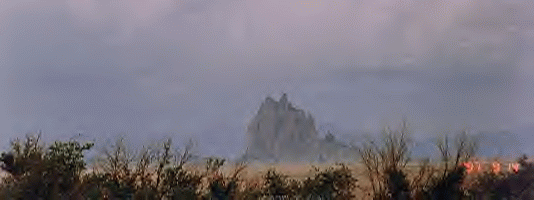|
|
Rural Net Plan Raises Hope
by Michael Coleman Albuquerque Journal Politics Writer
|
|

|
Michael Bonner, a fifth-grade teacher at Mesa Elementary School in Shiprock, has a problem he hopes Bill Clinton will help him solve when the president visits the Navajo Nation on Monday, April 17. Bonner said his school has 23 classrooms and five Internet connections. He said it's hard for schools in Indian country to teach cutting-edge technology because they are located right in the middle of the so-called "digital divide." "We don't have much access to the Internet, and what we do have is slow and unreliable," Bonner said. "The real losers are the kids." The president visited the Navajo Nation to tout his "New Markets" initiative. Clinton will unveil plans to bring telecommunications technology — and the educational and economic opportunities it creates — to rural and low-income areas such as the Navajo Nation.
"Given the new economy, it's so important to have access to, and knowledge of, technology," Newman said. "The president believes it is important to bridge the digital divide." After the speech, Clinton joined Dine Tribal College students as they chat over the Internet with students from Lake Valley School, 150 miles to the southeast. In his speech, Clinton announced millions of dollars in grants and corporate donations aimed at boosting high-tech capabilities on Indian reservations. Microsoft, for example, will donate $2.7 million worth of software and technical assistance to be distributed among eight Native American colleges, Newman said. Tachyon Inc., a California-based company that provides wireless Internet service, gave the Lake Valley Navajo School a $30,000 satellite system this week that connects the school's computers to the Internet. The U.S. Bureau of Indian Affairs eventually hopes to get satellite systems to all remote schools on the Navajo Nation. Clinton's speech focused on three themes: enhancing tribal college technical programs, expanding Internet access in Indian country and investing in Native American business, Newman said. The president also will announce the creation of the Native American Digital-Divide Task Force to address high-tech needs on Indian reservations. CEOs from some of America's most successful computer companies joined the president in Shiprock, as did members of Congress, the Rev. Jesse Jackson, Federal Communications Commissioner Gloria Tristani and others. At a White House news conference on April 4, Clinton said the Internet offers an unprecedented opportunity to break the cycle of poverty that has plagued Native Americans. "I believe that the computer and the Internet give us a chance to move more people out of poverty more quickly than at any time in all of human history," Clinton said. "But it won't happen by accident. We'll have to work to make it happen." Clinton's visit to the Navajo Nation marked the second time a sitting president has visited Indian country since Franklin Delano Roosevelt's administration, according to the White House. Clinton made the first visit since Roosevelt when he visited the Pine Ridge Indian Reservation in South Dakota last year. Roberta John, spokeswoman for the Navajo Nation's Economic Development Department, said Navajos need tools to become less dependent on the federal government. She said people on the reservation were excited about the president's trip and the message of economic hope he brought. "I hope he can let the world know that the Navajo Nation is the largest Indian nation in the country, yet we don't have the resources we need to improve our business environment," John said. Shiprock Pinnacle |
|
|
| Canku Ota is a free Newsletter celebrating Native America, its traditions and accomplishments . We do not provide subscriber or visitor names to anyone. Some articles presented in Canku Ota may contain copyright material. We have received appropriate permissions for republishing any articles. Material appearing here is distributed without profit or monetary gain to those who have expressed an interest. This is in accordance with Title 17 U.S.C. section 107. |
|
Canku Ota is a copyright of Vicki Lockard and Paul Barry. |
|